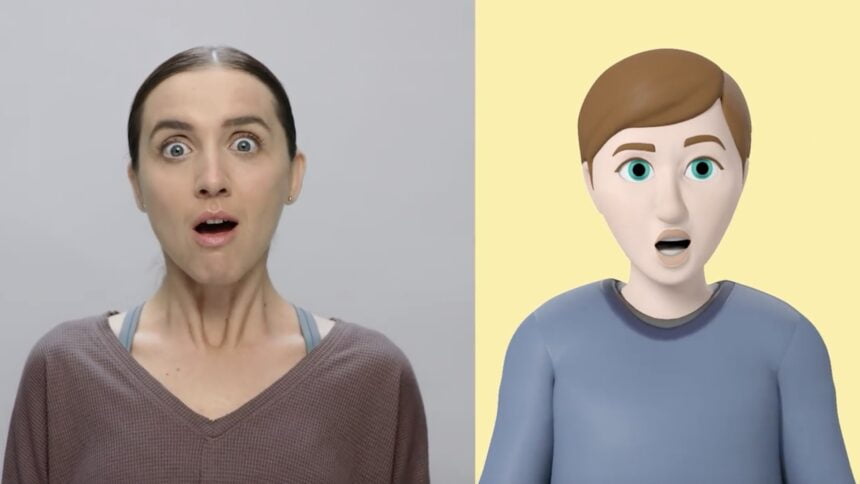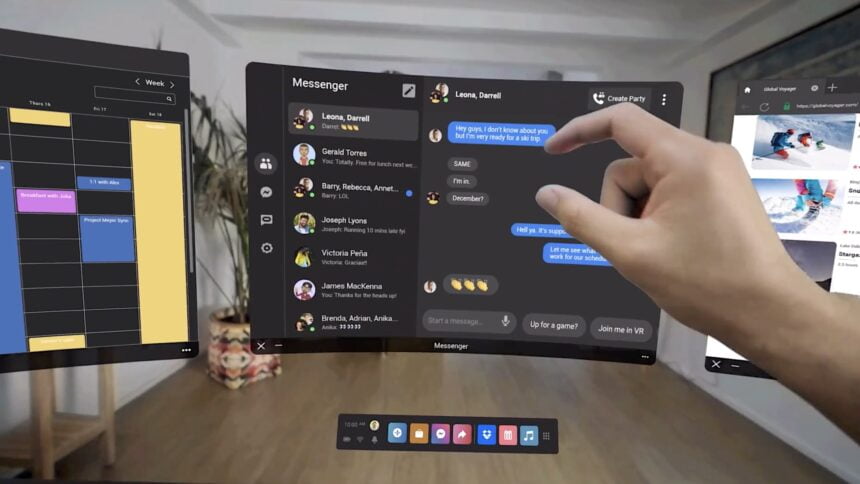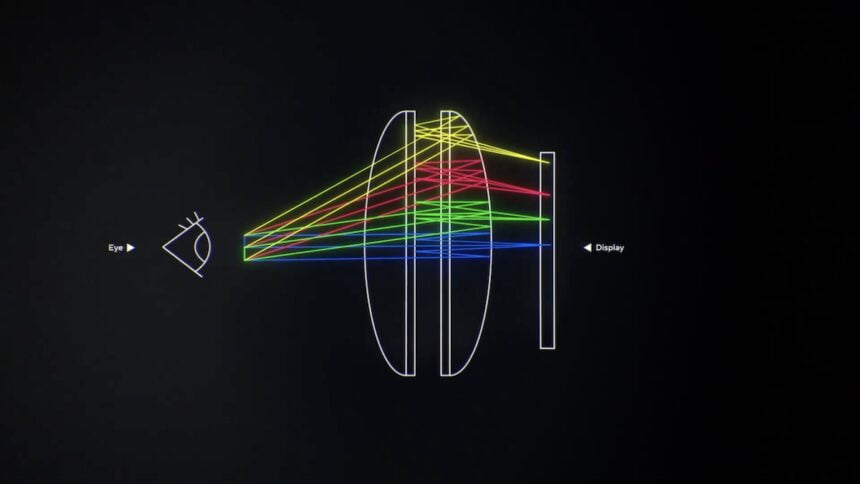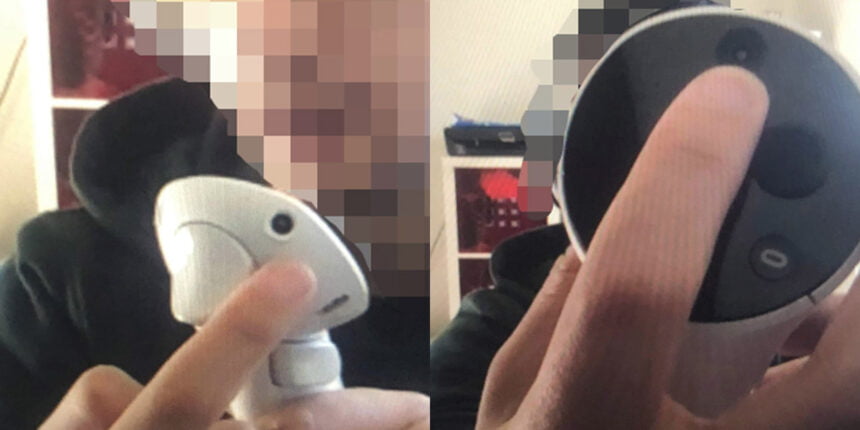All You Need to Know About Meta’s Project Cambria
Meta’s Project Cambria was revealed during Connect 2021 when the company also rebranded from Facebook. It is a high-end VR headset that is billed as Meta’s next big VR product this year. Although little was known about the headset for much of last year, the announcement in late 2021 coupled with a series of high-profile leaks from top industry analysts have shed some light on the headset.
From the leaks, we now know that the headset will be released in the summer of this year.
The official announcement of Meta Cambria at the Connect 2021 and the preceding leaks and rumors gave us a picture of the technology and the form factor of Project Cambria. The head of Meta Labs Andrew Bosworth and Meta boss Mark Zuckerberg finally confirmed that the company was working on a technically advanced “Quest Pro”.
Project Cambria was officially announced on October 28, 2021. Below is an excerpt of the Connect Keynote of the announcement:-
Subsequent leaks have also given us a picture of the technology and the form factor of Project Cambria.
In this article, we let you in on all you need to know about Project Cambria via a series of frequently asked questions (FAQs).
What is the Name of Meta’s New VR Headset?
Meta’s new VR headset is being developed under the code name Project Cambria. The real product name will only be announced in July when the device will be revealed.
Is Project Cambria the Successor to Meta Quest 2?
No. With Project Cambria, Meta is building a completely new Virtual Reality product line that has a high-end focus. However, Cambria will be backward compatible with the Quest ecosystem although it will offer much more in terms of its technical features.
Zuckerberg said Project Cambria “isn’t the next Quest” so this is not a Quest 3. The headset is, however “compatible with Quest” and will also include the company’s most advanced technology. From the description, it sounds like Cambria might as well be a Quest Pro headset.
Who is Meta Targeting with Cambria?
Meta wants to use Project Cambria to test out (in the market) some of the more advanced technologies coming from its own research laboratories. As soon as these technologies are mature and cheaper to deploy, Meta could incorporate them into the next Meta Quest.
The current Meta Quest (2) is cost-optimized and aggressively priced and is aimed at the mass market, allowing the Meta VR ecosystem to propagate as quickly as possible.
With Project Cambria, Meta is pursuing a different objective. It is building a more expensive and high-end VR headset product line targeting VR enthusiasts and which also provides a field of experimentation for its new and, particularly, more advanced VR technologies.
What’s New in Project Cambria?
During the announcement in 2021, Zuckerberg and Meta’s Product Manager for VR Devices Angela Chang confirmed three technical features and improvements for the high-end headset: –
1. Eye Tracking and Face Tracking
The headset will feature new sensors that allow for natural contact between avatars as well as the real-time transmission of facial expressions for virtual reality. This will allow for easier rendering of emotions. It will also lead to more realistic social interactions.

2. High-Quality Mixed Reality
Both the Meta Quest 1 and Quest 2 allow you to get information on your physical surroundings via a passthrough mode and the VR apps can even add digital objects to the physical environment displayed via the passthrough. However, the passthrough in Quest (2) is only displayed in black and white as the cameras are infrared. As a result, the current Passthrough vision does not relay a realistic and believable immersive environment. The video displayed in the current passthrough is so rough and blurred that you wouldn’t even make out the details displayed.
Cambria, on the other hand, will feature high-quality mixed reality by taking the passthrough mode to the next level. Instead of the current infrared cameras, it will utilize high-resolution RGB cameras that will reproduce the physical surroundings in color and with razor-sharp details such that you will even be able to take notes with a ballpoint pen or engage in some exercises with a virtual trainer in the living room.

Director of Product at (Meta) Reality Labs Angela Chang said that Cambria has a new “high-resolution, colored, mixed reality Passthrough” and it has been designed such that it will be able “to represent your physical world in the headset with a sense of depth and perspective.”
3. Improved Displays and Form Factor
There is also something new with the display technology. Cambria will be the Meta VR headset that will have pancake lenses. These lenses can be placed close to the display allowing for a narrower form factor. They will therefore look more like ski goggles than shoeboxes.

The new pancake optics will enable Cambria to provide a high-quality and artifact-free display. They will have the best optics among all the branded Meta VR headsets.
What Display Will the Cambria Headset Use?
Although Meta hasn’t commented on this, the latest leaks and reports say Cambria will use miniLED displays. The miniLEDs are improved LC displays that have a deeper black level although they do not come anywhere close to the image quality that you would get with the OLED displays.
What Does Cambria Look Like?
Meta’s official video rendering shows black VR headsets that have a slim visor and a halo headgear. Leaked video tutorials along with firmware snippets also confirm that the Cambia has a comparatively slim form factor and should therefore have a considerably lower weight along with better weight distribution as the battery has recently been moved to the rear part of the head mount.
Leaked video tutorials of Project Cambria: –
What VR Controllers Does Cambria Use?
The rendering video of the Cambria VR headset shown during the announcement indicates that the high-end headset will have new VR controllers but without tracking rings. Meta is yet to comment on the Cambria VR controllers but leaks suggest that the headset will have a new tracking system.

Using integrated laser projectors, Cambria could add an invisible infrared pattern into the environment which is recorded by infrared cameras in the VR controllers. This will also allow the devices to be spatially located if they are behind the virtual reality headset.
A video tutorial leak suggests that the Cambria VR controllers will have their own charging station. This could be due to the high energy consumption from the new tracking system.
Will the Cambria Headset Have Better Hand Tracking?
Both the Meta Quest 1 and Quest 2 don’t have sophisticated hand tracking, partly due to the fact that they don’t have special cameras installed for optical hand and finger detection.
John Carmack said that Cambria doesn’t have any separate sensors for hand tracking but you can expect the headset to have better hand tracking than Meta Quest 1 and Quest 2 due to its high-resolution RGB cameras. The hand tracking will not be perfect in Cambria but it will be an improvement over that of the Quest headsets.
However, developers will still need to deploy some tricks for optimal hand tracking so don’t there won’t be a massive leap in the quality of the hand tracking in Cambria.
Will Cambria Support Foveated Rendering and Variable Focus?
Both foveated rendering and variable focus technologies are extremely important for the quality and depth of immersion in virtual reality. However, they will likely only be available in the future generations of Cambria.
Foveated rendering enables the virtual reality headset to determine the area in the field of vision that the wearer’s eyes are focusing on and then only render this part in full detail. In foveated rendering, the virtual reality headset will render fewer pixels in the peripheral sections and send out the full resolution at the center of the vision. The areas that have the highest resolution follow the user’s gaze enabling them to experience optimal image quality constantly. This helps save on the computing power. It also allows for the rendering of higher resolutions as well as better quality graphics.
If foveated rendering works sufficiently fast and with precision, it will be invisible to the eye, and rendition of higher resolutions theoretically happens almost organically, like in real life. In practice, foveated rendering is technically difficult to implement. It begins with capturing the anatomical differences in the pupils and ends with the graphical rendering pipeline that must be rewritten for foveated rendering.
Andrew Bosworth admitted that foveated rendering isn’t doing much at the moment (in improving the quality of immersion) and there is only a slim chance that Cambria might support this rendering technique.
The same goes for variable focus. Meta has committed considerable resources over the years researching adaptive focus optics to resolve the vergence-accommodation conflict, one of the major causes of visual discomfort in virtual reality. Variable focus will give users a pleasant and more realistic viewing experience. However, according to the state of research and innovation at the moment, we are still far from the practical implementation of variable focus in VR headsets and it is unlikely to feature in Cambria.
What is the Most Important Feature in Cambria?
A groundbreaking feature in the Cambria VR headset is its video-based mixed reality mode, a vast improvement over classic AR headsets. Conventional augmented reality headsets such as Magic Leap, Nreal Light, or HoloLens that have transparent optics hardly improved their displays over the past decade. The technology has been held back by the very narrow field of view, low brightness as well as poor image quality.
Virtual reality headsets such as Meta Quest 1 and Quest 2 that have a passthrough mode don’t face these bottlenecks and will be the best way for users to experience mixed reality in the future. Apple’s upcoming AR/VR headset will also rely on passthrough.
The video-based mixed reality in Cambria will, in the meantime, bridge this gap until more advanced AR displays that provide similarly good image quality in thin form factors and transparent everyday devices come into play.
Are There Other Features That We Can Expect from Cambria?
Possibly. Meta hasn’t revealed everything about the upcoming Cambria headset so we might encounter a few more surprises down the line. During the announcement last year, Zuckerberg had hinted that they had saved some of the best of the headset for release this year.
How Much Will Cambria Cost?
Meta hasn’t revealed any prices but being a high-end headset, it will definitely be more expensive than the Meta Quest 2. Both Zuckerberg and John Carmack have hinted as much saying the Cambria will be a little more expensive or significantly more expensive. Would the high pricing blunt sales? In a keynote last year, Carmack said that Cambria would only have a tenth of the Quest user base.
According to XR hardware analyst Brad Lynch, Cambria will likely cost less than $1,000. Whether the headset is high-end or not, Meta would obviously want to reach as many users as possible with its new headset. They would also want the website to appeal to more than just companies and professionals, even if it means subsidizing the hardware, as we have seen in the past.
When Will Cambria be Launched?
The Cambria headset will be launched in the second quarter of 2022 according to Lynch and tech analyst Ming-Chi Kuo. No concrete details have been divulged yet about the release date.
https://virtualrealitytimes.com/2022/01/08/all-you-need-to-know-about-metas-project-cambria/https://virtualrealitytimes.com/wp-content/uploads/2022/01/Project-Cambria-600x338.pnghttps://virtualrealitytimes.com/wp-content/uploads/2022/01/Project-Cambria-150x90.pngHardwareTechnologyVirtual Reality NewsVR HeadsetsMeta’s Project Cambria was revealed during Connect 2021 when the company also rebranded from Facebook. It is a high-end VR headset that is billed as Meta’s next big VR product this year. Although little was known about the headset for much of last year, the announcement in late 2021...Sam OchanjiSam Ochanji[email protected]SubscriberVirtual Reality Times - Metaverse & VR
